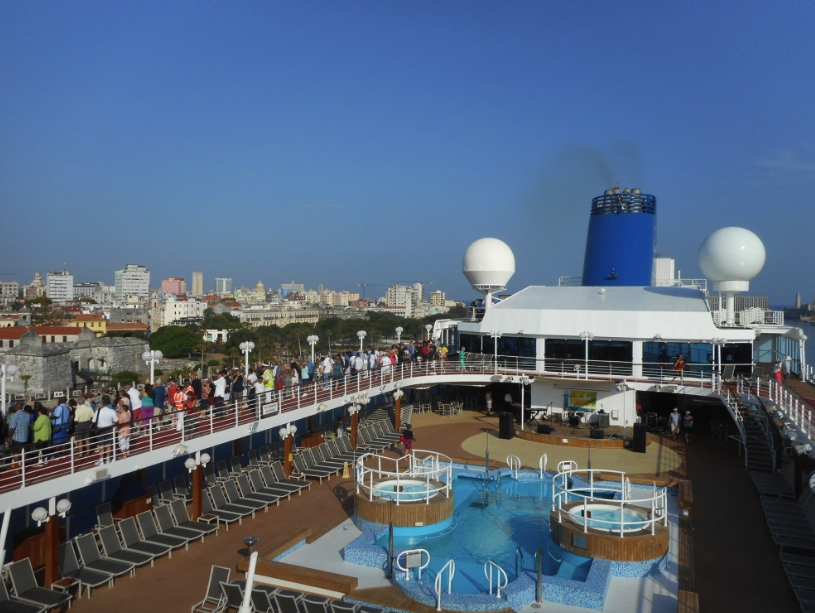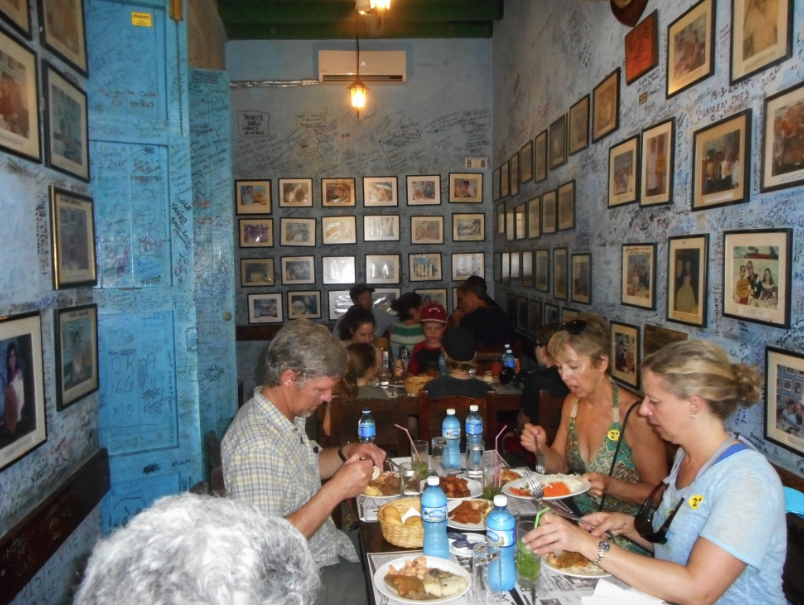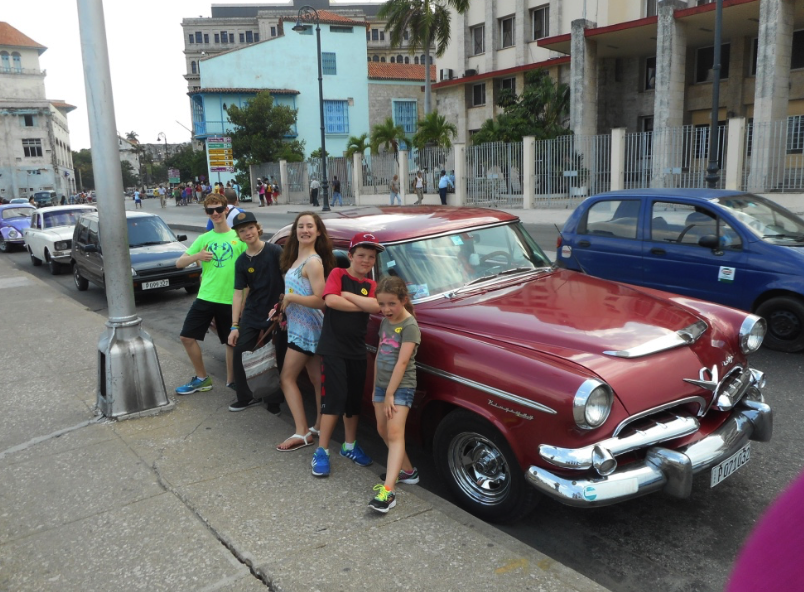
Adonia passengers cheering as ship enters Havana Harbor
By Eileen Ogintz
HAVANA, CUBA (DAY 1) — Cubans lined the Havana shoreline, cheering loudly as the ship sailed in.
Those on board lined the decks cheering, waving Cuban and American flags as Adonia, became the first American ship to enter Havana Harbor in 58 years—the first ship of the company’s Fathom line dedicated to impactful travel.
“It was very emotional for me,” said Cuban born Arnie Perez, Carnival Corporation’s general counsel who has co-led the effort to win approval for this day. Perez, who left Cuba when he was nine months old, hadn’t returned until last fall. His wife Carmen who was seven when she left has never been back.
“I’m home,” Perez said.
“I’m blessed to be American and I’m glad to be back,” said Anna Garcia, who also is Cuban born. “This is tomorrow for Cuba.”
The moment almost was derailed until Cuba agreed to allow Cuban born Americans to sail into Cuba. Until now, by regulation, they were only permitted to fly.

Street vendor selling “chiviricos” in Old Havana
The moment was emotional for many of the 700 passengers on board. “I had tears running down my face,” said Mary Reinhart, here with a group of friends from Philadelphia.
“The way all the Cubans greeted us made me feel really good,” said Noah Russell, 13. “I didn’t know they cared that much.”
Once on shore, the cruise passengers took part in a carefully choreographed “people-to-people” experience mandated by the American government and designed to facilitate cultural exchange. In groups of 33, we toured Old Havana, marveled at the Cathedral and gaped at the 1950s-vintage American cars — bright blue and red and pink. We listened to the street performers on every corner, and browsed the stands selling old books and posters—a revolutionary comic in Spanish, perhaps. The Plaza de Armas is Havana’s oldest square, laid out in the early 1520s.

Lunch at La Bodeguita del Medio
“Anytime you can travel with kids it broadens their horizons,” said Mitzy Russell, a teacher from Ketchum, Idaho. “You take off the blinders and this,” she said, gesturing at the welcoming crowds, “Is history in the making.”
She added that her parents were excited for the grandchildren to see the old cars popular when they were young. “I think it might help to connect the generations,” she said.
We were touring with the extended Russell family, including five kids, two of them belonging to Tara and Jeff Russell. Tara is the president of the new brand Fathom brand. The kids, I thought, were troopers in the heat and humidity as the knowledgeable tour guide, Mario Ricardo, talked about Cuba’s history from the 16th Century.
“I wasn’t really listening,” admitted eight year-old Lucy Russell. But she and the other kids were clearly impressed by the old buildings and especially being able to climb to the top of the tower in the famous Cathedral de San Cristobal of Havana, which is on a compact square.

Kids from the Adonia mugging for the camera in Old Havana
We were surprised by how aggressive vendors were—asking to pose for pictures, for example and demanding payment. Clearly, though, most everyone was glad to see us. “America is good!” they’d say.
“We’re very happy to see you,” said the young man selling us Chivirico—a kind of churro fashioned like chips, a cone for a peso.
We had lunch in a famous Havana spot—La Bodeguita del Medio where legend has it, Ernest Hemingway drank at the bar and like other visitors—famous and non-famous alike—scrawled their names on the walls. We ate typical Cuban fare—a mixed plate of meat, fish, shrimp with rice and beans and fried plantains, finishing with ice cream. The cost, including a mojito, was roughly $25 U.S.
Today there are state-run restaurants (as is this one) and also a growing number of private restaurants. Mimi Whitefield, who has long covered Cuba for the Miami Herald and has visited many times, suggests that the private restaurants are more innovative but might be a little pricier. “If you are a foodie, go to the private restaurants,” she says.
She also suggests if you are an adventurous traveler, you consider the Casas Particulares (you can book through Airbnb.com) where you will have a room and a bathroom in a private home.
But the tourism infrastructure is not developed — there is virtually no Wi-Fi for example — so unless you are a very seasoned traveler, arriving by ship like Fathom can be a good bet for a first visit.
Still, the people-to-people program is confusing. It is a requirement of the U.S. government. Group tours and Fathom arrange them. You can also arrange your own. If you are a nurse, for example, you could arrange to meet with other medical professionals. But under this program, Americans are not supposed to visit Cuba’s beautiful beaches.
Next trip maybe. Meanwhile, none of us will forget the Cubans cheering for us.
